Imagine stepping into a home in 2025 where every detail feels thoughtfully designed, seamlessly blending advanced technology, eco-friendly materials, and modern style.
This guide explores the world of modern home design inside, revealing how today’s leading trends, smart innovations, and evolving materials are shaping the way we live.
Discover the latest in cutting-edge aesthetics, intelligent home features, sustainable solutions, and expert strategies for maximizing comfort and function.
Ready to transform your space? Dive in for inspiration, practical advice, and the tools to create a truly modern sanctuary.
Defining Modern Home Design in 2025
Stepping into a modern home design inside in 2025 reveals a space where innovation, sustainability, and personal expression converge. Today’s interiors go beyond mere aesthetics, reflecting changing lifestyles, new technologies, and a deeper connection with nature. To fully appreciate the modern home design inside, it’s essential to understand its evolution, guiding philosophies, emerging trends, and the visionaries shaping its future.
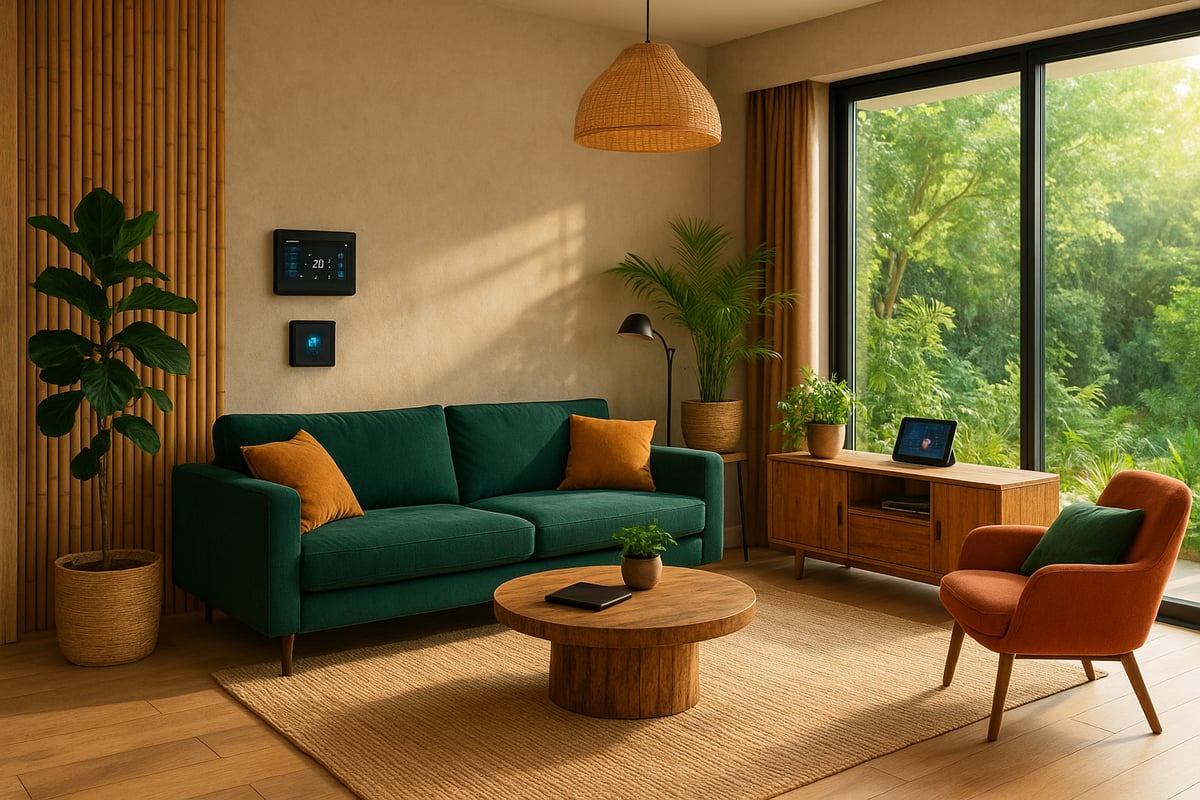
Evolution of Modern Home Design
Modern home design inside has journeyed from the clean minimalism of mid-century modern to today’s tech-savvy, adaptable environments. Early modernism championed open layouts, simple forms, and functional furniture. Over time, global design movements introduced new materials, colors, and cultural influences, blending international aesthetics.
The pandemic accelerated a shift in how people view their living spaces. Homes became multifunctional, supporting work, relaxation, and wellness. Now, the modern home design inside is defined by flexible layouts, integrated technology, and an emphasis on comfort and wellbeing.
Core Principles and Philosophies
At the heart of modern home design inside are timeless principles: simplicity, functionality, and clean lines. Spaces are uncluttered yet warm, with each element serving a purpose. Designers prioritize open-plan living, often merging indoor and outdoor areas for a seamless flow.
Personalization is key. Flexible spaces adapt to changing needs, whether it’s a home office one day or a yoga studio the next. Natural light, neutral palettes, and sustainable materials contribute to an environment that feels both modern and inviting.
Key Trends for 2025
Several trends define modern home design inside for 2025. Biophilic design, which brings nature indoors through natural materials and abundant greenery, continues to gain popularity. According to Houzz (2023), 66 percent of homeowners prioritize natural light and plants in their spaces.
Multifunctional rooms are essential, supporting work, leisure, and health. Expect to see bold color palettes, statement textures, and innovative lighting. For a comprehensive look at these influences, see the 2025 Interior Design Guide.
Influential Designers and Thought Leaders
Today’s modern home design inside is shaped by visionary architects and interior designers. Leading figures introduce fresh concepts, from sustainable luxury to adaptable modular systems. Signature projects often blend smart technology with artisanal craftsmanship, creating homes that inspire and evolve with their occupants.
Designers like Kelly Wearstler and Bjarke Ingels influence global trends, bringing bold ideas to residential interiors. Their work demonstrates how modern home design inside can be both functional and expressive, setting benchmarks for innovation and style.
Data & Insights
Market data reveals a surge in smart home adoption and sustainable material use. Consumer preferences are shifting, with more demand for customization and health-focused interiors. For instance, the integration of air quality monitors, circadian lighting, and energy-efficient appliances reflects this new priority.
A growing number of homeowners seek tailored solutions that reflect their unique lifestyles. As the modern home design inside continues to evolve, data-driven insights and technological advancements will shape the next wave of innovation, ensuring homes are both beautiful and future-ready.
Smart Technology Integration for Modern Living
Step into a world where every aspect of modern home design inside is elevated by seamless technology. In 2025, integrated smart systems are not just a luxury, but a core element of daily comfort, efficiency, and security. As homes evolve, intuitive tech solutions are redefining the way we live, making spaces smarter, healthier, and more responsive to individual needs.
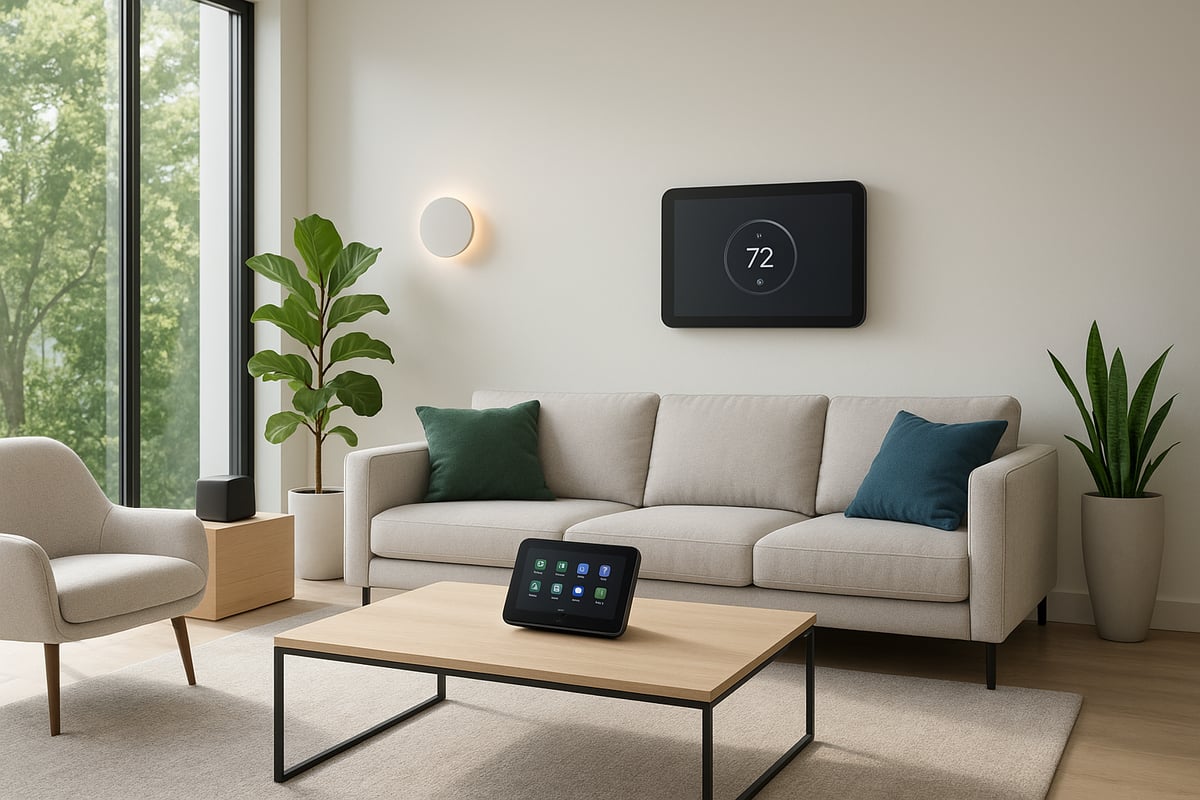
The Connected Home Ecosystem
The foundation of modern home design inside is a connected ecosystem that unites lighting, HVAC, security, and entertainment. In 2025, these systems communicate effortlessly, creating a unified environment that adapts to your lifestyle.
Imagine controlling your entire space from a single device or app. Lighting adjusts based on your schedule, climate control maintains ideal comfort, and entertainment systems sync across rooms. This level of integration not only streamlines daily routines but also enhances energy efficiency and overall convenience.
With interoperability at the forefront, homeowners can now customize their environments more than ever. The result is a harmonious blend of technology and style, setting a new standard for modern home design inside.
Essential Smart Features in 2025
In modern home design inside, essential smart features are transforming how residents interact with their spaces. Voice-activated controls are now the norm, allowing you to adjust lighting, temperature, and even window shades with a simple command.
AI-driven home management systems optimize energy use, monitor security, and predict maintenance needs. Kitchens feature IoT-enabled appliances like smart fridges that track groceries, ovens that self-regulate for perfect cooking, and coffee makers you can schedule from your phone.
These innovations not only boost convenience but also support sustainability. As technology evolves, modern home design inside continues to prioritize intuitive, user-friendly solutions that enhance daily living.
Wellness and Health Tech
Wellness is a defining focus of modern home design inside for 2025. Advanced air and water quality monitoring systems ensure a healthier environment, automatically adjusting filtration and alerting homeowners to potential issues.
Circadian lighting systems mimic natural daylight patterns to support sleep and mood. Touchless fixtures in kitchens and bathrooms reduce germ transmission, while antimicrobial surfaces add another layer of protection.
By integrating these technologies, modern home design inside creates spaces that actively contribute to occupant health. The result is a living environment that feels as good as it looks, with wellness woven into every detail.
Security and Privacy Considerations
Security is an essential pillar of modern home design inside. Homeowners benefit from advanced surveillance, smart locks, and customizable access controls that safeguard property and privacy.
These systems use encrypted data transmission and biometric verification for added peace of mind. However, with increased connectivity comes the challenge of protecting personal information.
To address this, modern home design inside incorporates robust privacy protocols, regular software updates, and user education on best practices. The goal is a secure, worry-free home environment where technology empowers rather than exposes.
Real-World Examples
A day in a fully automated home illustrates how modern home design inside is revolutionizing daily life. You wake to lights that gently brighten, climate systems that adjust to your preferences, and a kitchen that prepares your morning coffee automatically.
With the rapid adoption of smart features, the trend is undeniable. According to Smart home adoption statistics 2025, 77% of new homes in 2024 included at least one smart feature, highlighting the mainstream embrace of integrated technology.
These innovations are not just about convenience—they are reshaping how we experience modern home design inside, making homes more responsive, efficient, and enjoyable.
Sustainable Materials and Eco-Conscious Choices
Sustainability is at the heart of modern home design inside in 2025. Homeowners and designers seek innovative ways to reduce environmental impact while enhancing comfort and style. Conscious material selection, efficient systems, and holistic design philosophies are now essential for creating interiors that stand the test of time.
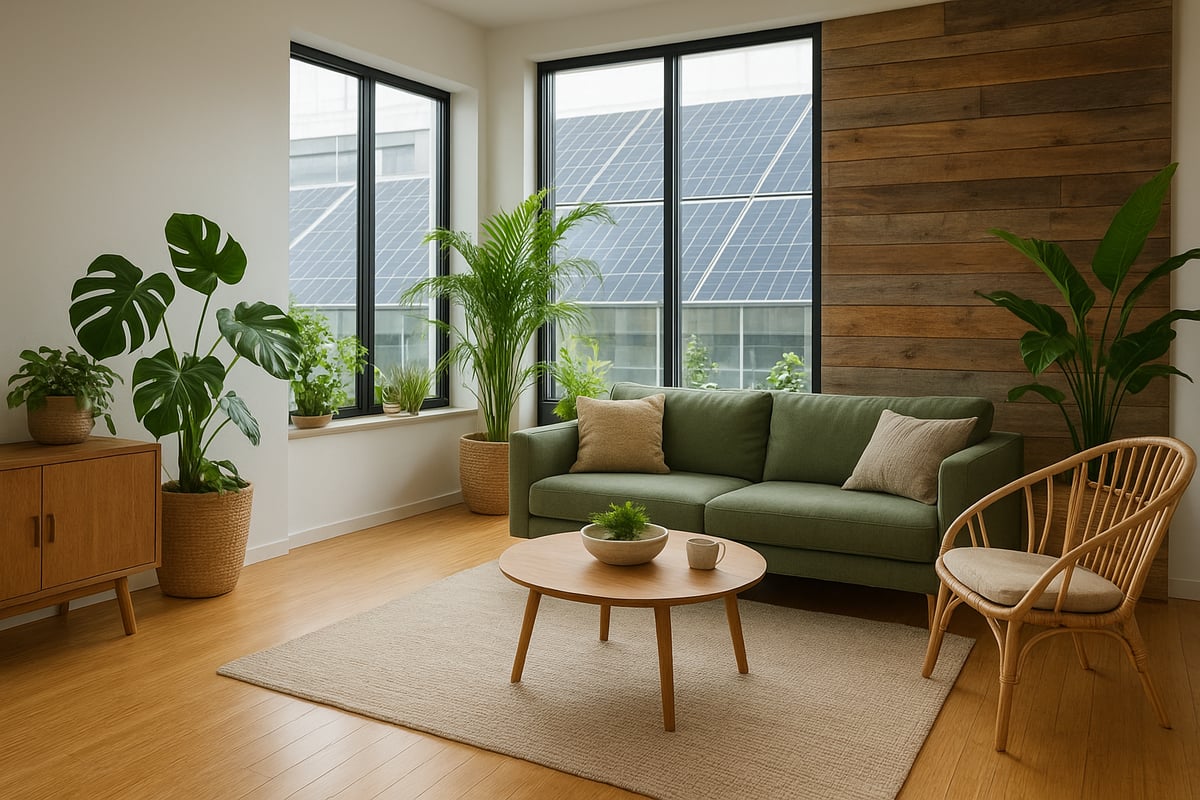
Eco-Friendly Building Materials
The foundation of modern home design inside is built on eco-friendly materials. Renewable resources like bamboo, cork, and reclaimed wood are favored for their low carbon footprint and natural beauty. These materials not only add warmth and character but also support sustainable forestry practices.
Low-VOC paints, recycled metal, and glass are increasingly popular for walls, fixtures, and decorative elements. These choices minimize exposure to harmful chemicals and contribute to healthier indoor air. For a deeper dive into sustainable material options and their benefits, explore the Sustainable Materials for Interiors guide.
Energy Efficiency and Resource Conservation
Modern home design inside prioritizes energy efficiency at every stage. High-performance insulation and triple-glazed windows help maintain comfortable temperatures and reduce energy consumption. Solar panels, now more affordable and efficient, are a common sight on rooftops, generating clean energy for daily use.
Green roofs and living walls further insulate homes, manage rainwater, and promote biodiversity. These strategies not only lower utility costs but also contribute to a healthier environment for all occupants.
Water-Saving Fixtures and Appliances
Resource conservation is a defining feature of modern home design inside. Smart irrigation systems monitor soil moisture and weather, reducing water waste in gardens and landscapes. Indoors, low-flow faucets, showerheads, and toilets drastically cut water consumption without compromising performance.
Water recycling systems capture and reuse greywater from sinks and showers for irrigation or flushing, maximizing every drop. These innovations make sustainable living both practical and accessible.
Certifications and Standards
Quality assurance is crucial in modern home design inside. Green building certifications like LEED and WELL set the benchmark for eco-conscious construction and interiors. These standards evaluate everything from energy use to materials and indoor air quality.
According to Houzz, 48% of homeowners plan to increase eco-friendly upgrades in 2025, reflecting a growing commitment to sustainable living. Choosing certified products and partners ensures transparency and measurable results for your project.
Design for Longevity and Adaptability
Longevity is a guiding principle in modern home design inside. Modular furniture and adaptable layouts allow spaces to evolve with changing needs, reducing waste and extending product life cycles. Leading brands offer innovative solutions, from reconfigurable shelving to expandable dining tables, that support flexible lifestyles.
Investing in durable, timeless pieces minimizes the need for frequent replacements. This approach not only conserves resources but also creates interiors that remain functional and stylish for years to come.
Biophilic and Circular Design Principles
Modern home design inside embraces biophilic elements, integrating nature through indoor plants, natural materials, and ample daylight. These features support mental and physical wellbeing, creating restorative environments.
Circular design principles aim to close the loop by reusing, recycling, and repurposing materials at every stage. The result is a home that nurtures its occupants while minimizing its environmental footprint, embodying the future of conscious living.
Space Optimization: Maximizing Functionality in Modern Homes
Step inside a contemporary residence and you will see how modern home design inside has transformed the way we use space. Today, every square foot is curated for flexibility, efficiency, and comfort. As urban living grows and lifestyles diversify, optimizing space is not just a trend but a necessity. This section explores how innovative layouts, furniture, and technology are redefining what is possible within modern home design inside.
Open-Plan Living and Zoning
Open-plan layouts are at the heart of modern home design inside. By removing unnecessary walls, homes feel larger and airier, maximizing both light and flow. However, the challenge lies in defining functional zones without sacrificing openness.
Designers often use furniture placement to distinguish areas for lounging, dining, or working. Rugs, lighting, and even subtle floor level changes can further delineate spaces. Screens and shelving units provide privacy while maintaining visual connection. This approach creates a seamless transition between activities while keeping the modern home design inside cohesive and inviting.
Multifunctional Furniture and Storage Solutions
The rise of multifunctional furniture is a hallmark of modern home design inside. Expandable dining tables, wall beds, and modular sofas allow rooms to shift purpose in moments. Built-in storage, such as under-stair drawers or recessed shelving, keeps belongings organized without cluttering the space.
Hidden compartments and custom cabinetry make the most of every nook. For families and remote workers, flexible furniture means a single space can serve as an office, guest room, or play area. This adaptability is vital for achieving both style and practicality in modern home design inside.
Small Space Innovations
In urban settings, small space innovations are essential to modern home design inside. Vertical storage solutions, such as tall shelving or hanging organizers, take advantage of unused wall areas. Sliding doors and retractable walls offer privacy and flexibility, ideal for studios and micro-apartments.
Some homes feature convertible rooms, where a living area transforms into a bedroom or workspace with minimal effort. Innovative case studies show that even the most compact apartments can feel open and functional when modern home design inside prioritizes creative solutions and clever engineering.
Flexible Work and Wellness Spaces
The pandemic has accelerated the demand for flexible work and wellness zones within modern home design inside. Home offices are now standard, often integrated into living rooms or bedrooms using partitions or fold-away desks. Fitness nooks and meditation corners offer spaces for health and relaxation without requiring dedicated rooms.
Adaptable layouts ensure that homes can support hybrid work lifestyles and changing family needs. By incorporating flexible zones, modern home design inside can evolve alongside its inhabitants, fostering both productivity and wellbeing.
Data & Trends
Recent data highlights the shift in homeowner priorities: 59% now seek multifunctional spaces post-pandemic (Houzz). Urban dwellers especially value adaptability, with successful projects often featuring modular layouts and built-in storage. For further inspiration on optimizing space and embracing the latest trends, consider exploring the Casa Decor Trend 2025 Essentials.
In summary, the art of space optimization is central to modern home design inside. By leveraging smart layouts, multifunctional furnishings, and innovative ideas, homeowners can create interiors that are as dynamic as their lifestyles.
Color, Texture, and Lighting Trends for 2025
Step into a world where color, texture, and lighting take center stage in modern home design inside. In 2025, these elements are more than decorative touches—they are essential tools for creating spaces that feel vibrant, inviting, and deeply personal.
Bold Color Palettes and Accents
Modern home design inside is embracing audacious color choices for 2025. Deep greens, warm earth tones, and vibrant blues dominate palettes, bringing energy and sophistication to interiors. Designers use color blocking and accent walls to add personality and visual interest in living spaces.
Popular combinations include:
- Deep forest green with muted clay
- Navy blue paired with golden ochre
- Terracotta alongside crisp white
According to the 2025 home design trends survey, homeowners are more experimental than ever, using bold hues to create memorable focal points. This trend reflects a desire for uniqueness and comfort in modern home design inside.
Texture Layering for Depth
Texture is a defining feature of modern home design inside in 2025. By mixing materials like velvet, terrazzo, natural wood, and brushed metal, designers create spaces that feel rich and multidimensional.
Tactile finishes, such as ribbed wall panels or 3D tiles, add sensory intrigue. Layered textures not only provide visual depth but also invite touch, making interiors more engaging. Combining smooth and rugged surfaces helps achieve a balanced, harmonious atmosphere that is both contemporary and timeless.
Lighting as a Design Statement
Lighting has evolved into an art form within modern home design inside. Layered lighting schemes—ambient, task, and accent—are essential for both function and mood.
Statement fixtures, from sculptural pendants to geometric chandeliers, serve as focal points in rooms. Smart lighting controls allow for effortless adjustment of brightness and color, enabling homeowners to tailor their environment for any occasion. Integrating technology and aesthetics ensures lighting is both practical and visually striking.
| Lighting Type | Purpose | Example |
|---|---|---|
| Ambient | General | Recessed ceiling lights |
| Task | Focused | Desk or reading lamps |
| Accent | Decorative | LED strips, spotlights |
Natural and Artificial Light Balance
Achieving the right mix of natural and artificial light is crucial in modern home design inside. Designers maximize daylight by carefully placing windows, using mirrors, and selecting sheer window treatments.
Circadian lighting systems are on the rise, automatically adjusting color temperature throughout the day to support wellness and sleep. This thoughtful balance not only enhances comfort but also contributes to energy efficiency, supporting both aesthetics and sustainability in the home.
Examples and Inspiration
Leading designers showcase the power of color, texture, and lighting in modern home design inside through innovative projects. Spaces featuring layered lighting and bold textures are highly recommended—72% of designers advocate for this approach (ASID, 2023).
Inspiration can be drawn from show homes that combine color-blocked feature walls, plush textiles, and integrated smart lighting. These examples highlight how thoughtful design choices transform interiors into modern sanctuaries that reflect personal style and enhance daily living.
Personalization and the Role of Digital Tools
Modern home design inside is increasingly defined by the desire for spaces that reflect individuality. Homeowners want more than generic interiors. They seek layouts, finishes, and features tailored to their personalities and lifestyles. This shift has led to a surge in demand for modular and bespoke furniture, allowing each room to become a true extension of its owner’s vision.
Customization in Modern Home Design
The rise of customization is revolutionizing modern home design inside. Homeowners now expect unique layouts, curated color palettes, and personalized décor. Modular shelving, made-to-order sofas, and adjustable lighting are just a few examples of how spaces adapt to changing needs. This focus on individuality ensures every home feels distinct, fostering a deep sense of belonging and satisfaction.
Digital Design Tools and Virtual Planning
Digital tools are at the heart of modern home design inside. Platforms offering 3D modeling and augmented reality (AR) enable users to visualize layouts before making decisions. Virtual moodboards and material selection tools streamline the design process. By experimenting with finishes and layouts digitally, homeowners minimize costly mistakes and achieve results that align perfectly with their vision.
Empowering DIY and Professional Collaboration
Technology has also empowered both DIY enthusiasts and design professionals. Online courses, webinars, and design communities provide accessible education and support. Homeowners and designers now collaborate remotely, sharing ideas and feedback in real time. This democratization of design knowledge means anyone can participate in shaping their modern home design inside, regardless of prior experience.
How Digital Resources Empower Modern Design
Platforms like Craft’n Build Design Co. have become essential for modern home design inside. They offer CAD models, online courses, and customizable templates, making the design process faster and more creative. Users benefit from a supportive community, instant access to resources, and inspiration for every project. Digital resources accelerate timelines, enhance skill development, and encourage experimentation in home design.
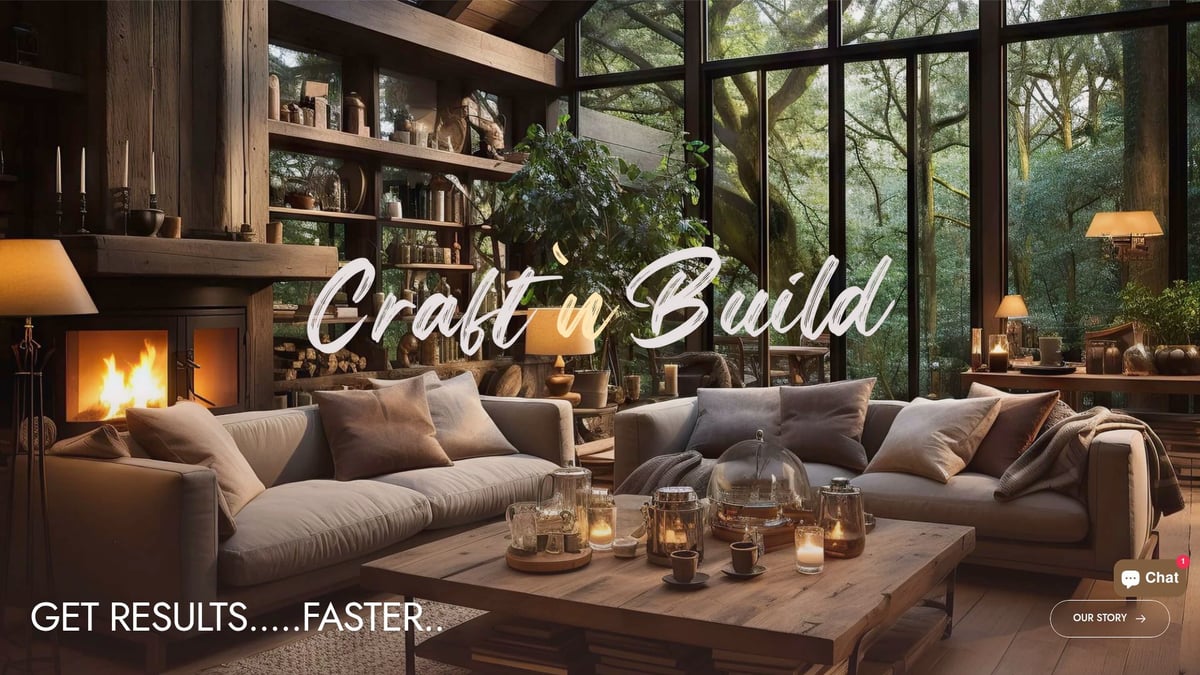
Future Trends in Personalization
Looking ahead, AI-driven recommendations and predictive design tools will further transform modern home design inside. Data-driven customization will allow spaces to adapt to occupants’ preferences and habits. As technology advances, homeowners will enjoy even greater control, ensuring interiors remain functional, stylish, and uniquely theirs.
Examples
Real-world examples highlight the power of digital tools. Homeowners are using 3D visualization and AR to plan renovations and experiment with new ideas. According to Interior Design Magazine, 64% of design professionals now use digital tools for project planning, a trend echoed in the 2023 tech trends report. This widespread adoption is making modern home design inside more accessible and innovative than ever before.
As you look ahead to shaping your own modern sanctuary in 2025, remember that great design starts with a solid foundation of knowledge and practical skills. Whether you're inspired by cutting-edge trends, sustainable materials, or smart technologies, building your confidence in interior design can make all the difference. If you’re ready to turn these insights into action and elevate your personal or professional projects, you can take the next step with a comprehensive, hands-on learning experience. Explore how you can bring your vision to life—Get started with Interior Design.

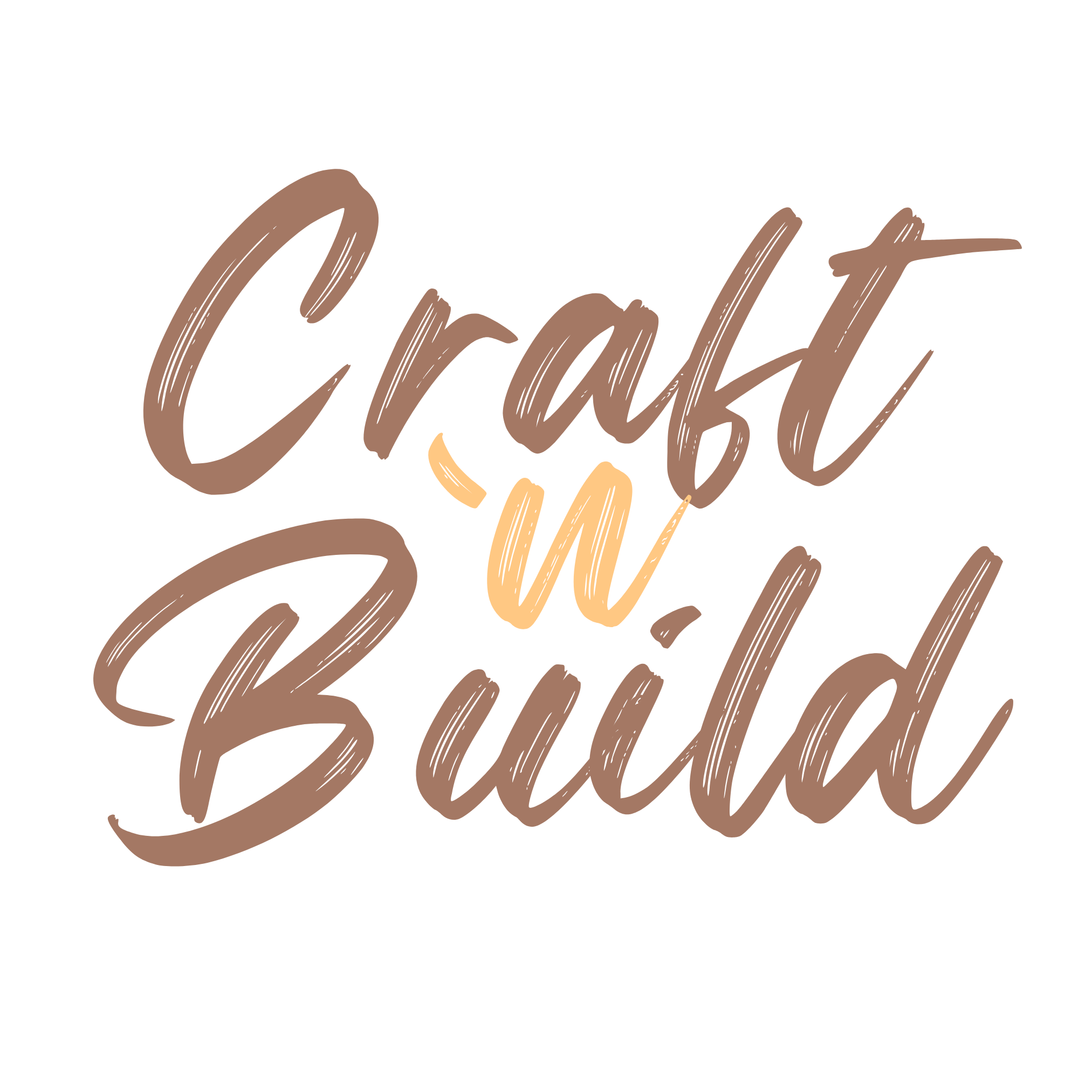


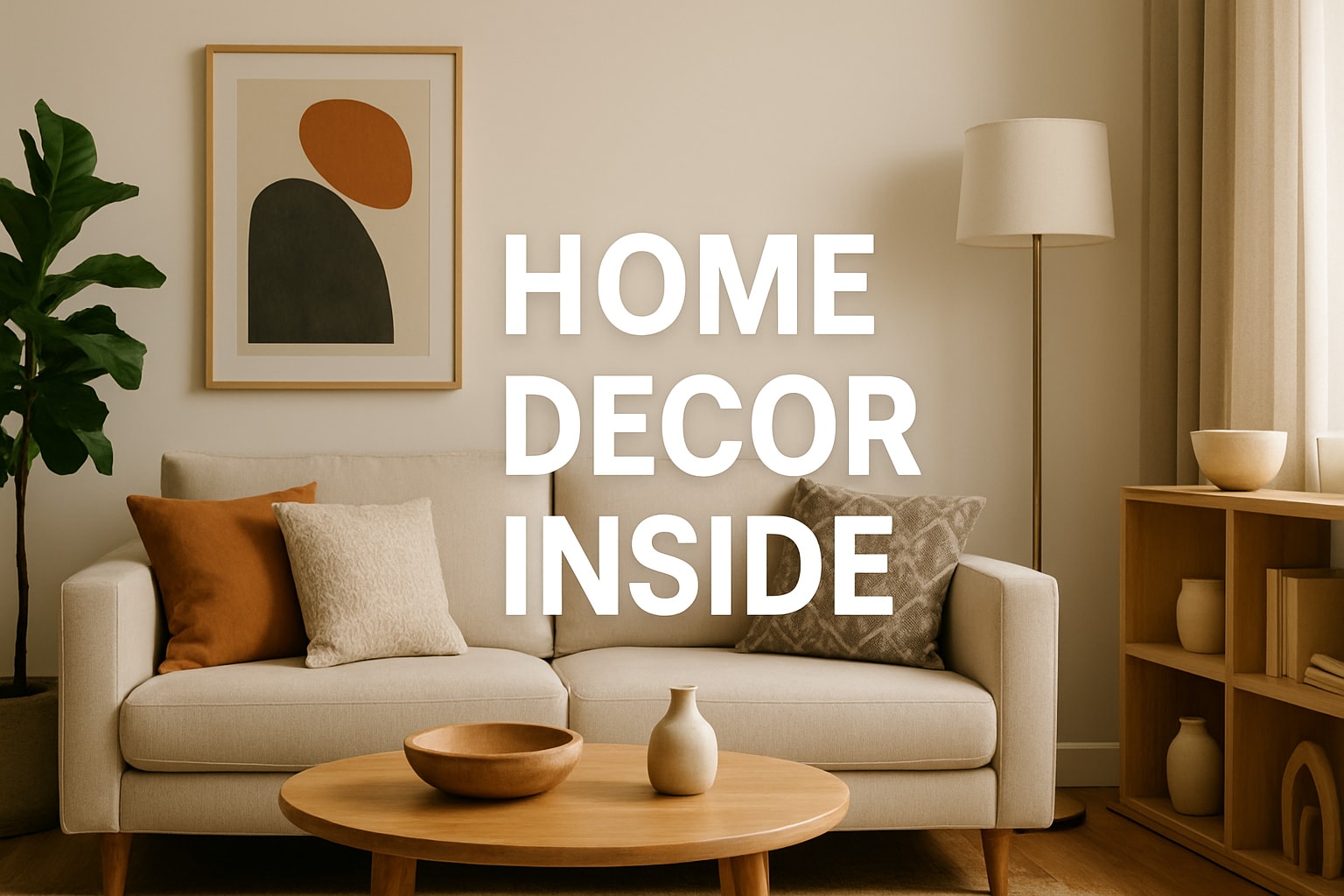
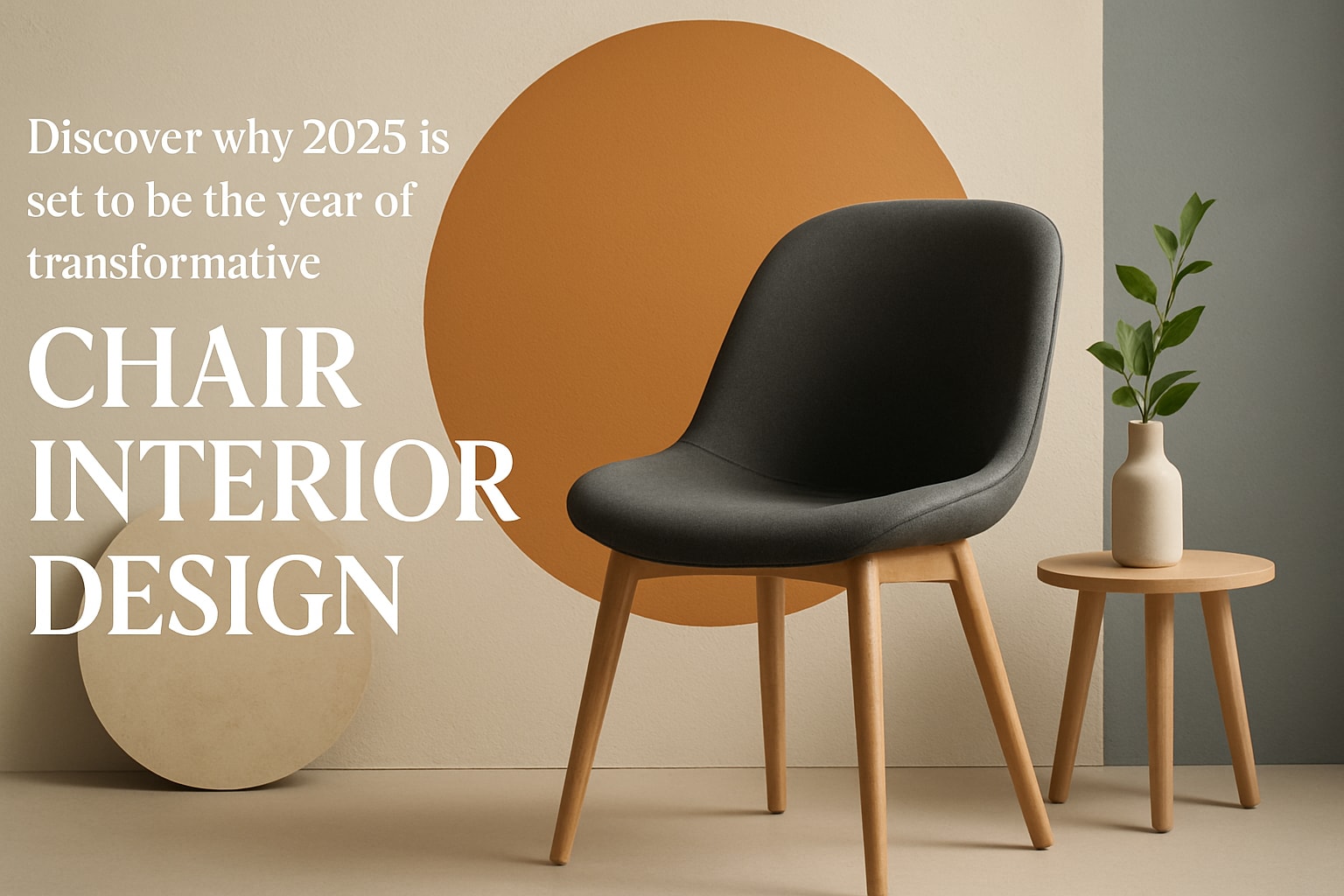
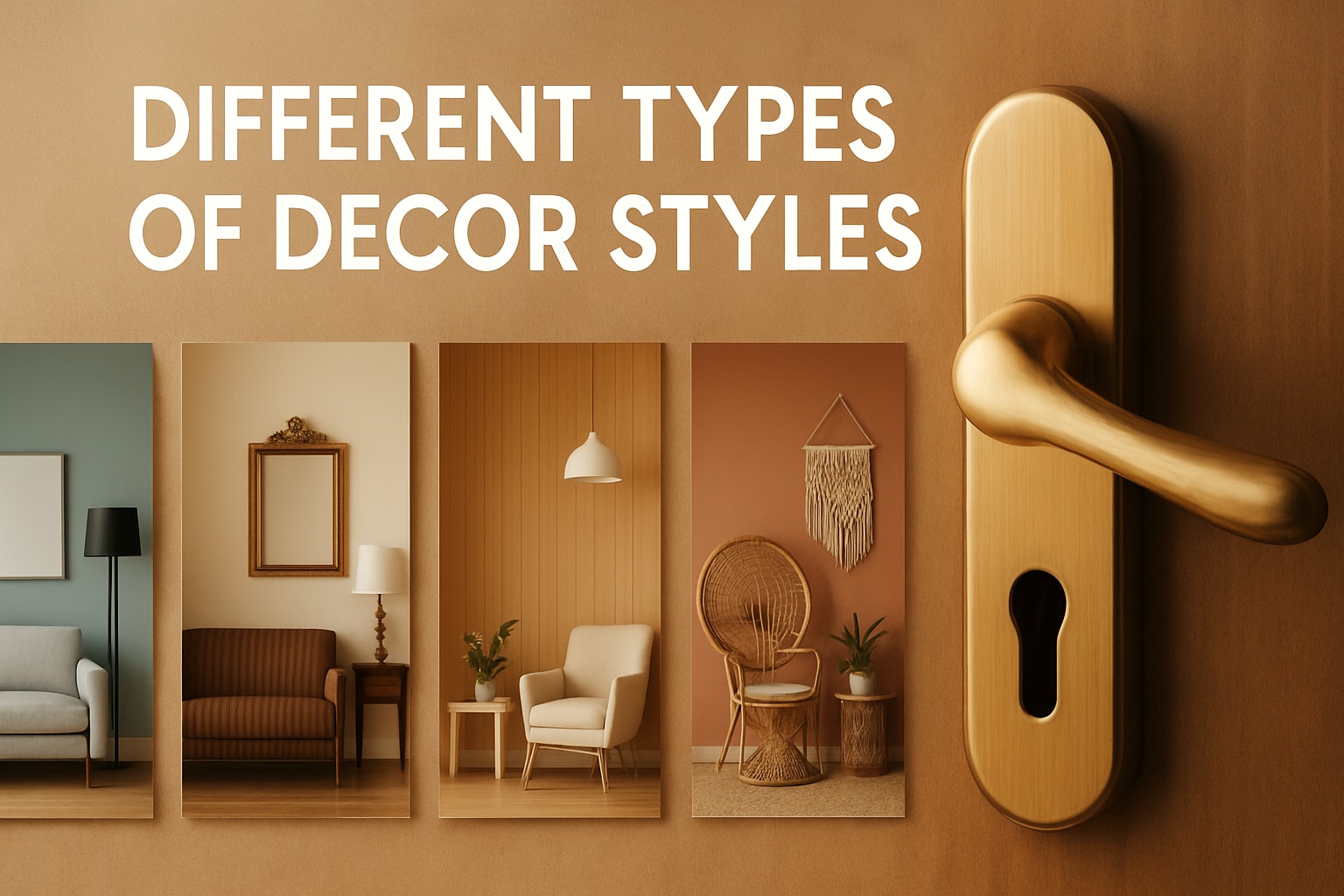
Share:
The Ultimate Guide to Interior Design for Model Homes 2025
House Interior Architecture Guide: Your 2025 Design Roadmap